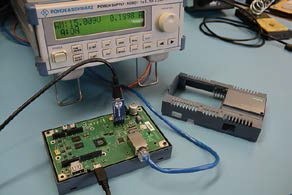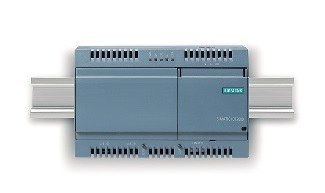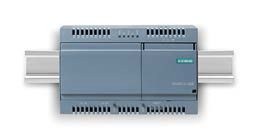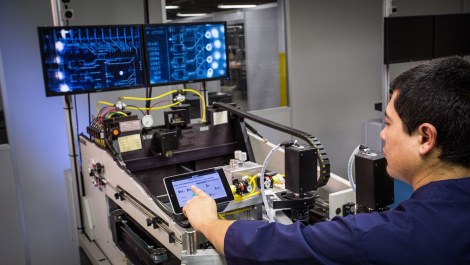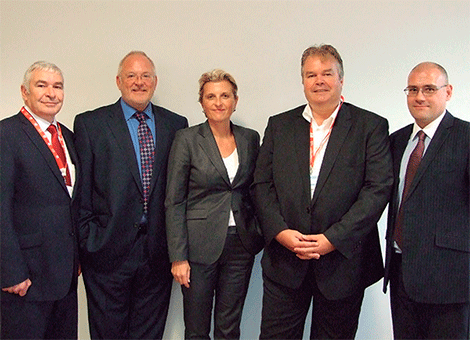Heiko Luckhaupt, industrial marketing manager at RS Components, talks about the current gap between IoT and the industrial world, as well as Simatic IOT2020, the new open, Arduino-compatible development platform developed by Siemens to get the education community started to shorten distances.
The Internet of Things (IoT) and its industrial variant, IIoT, are two global trends that are potentially going to change the world in a relatively short time. It is anticipated that there will be tens of billions of devices connected to the Internet of Things in the coming years.
Industrial IoT
The Industrial IoT (IIoT) is based on concepts similar to the generic IoT: secure management of remote assets through smart devices (smartphones, tablets...) through visual and highly personalized user interfaces. Industrial IoT also entails the deployment of ubiquitous smart sensors in conjunction with highly automated processes controlled by distributed intelligence. For example, operational or environmental data can be collected with sensors and transmitted through IP networks and gateways to the Cloud or other similar IT infrastructures for analysis and processing.
The basic information obtained can be sent to end users, or it can even be the systems themselves that, for example, in a smart factory environment, make autonomous production decisions in real time, through the use of advanced modeling algorithms. In this way, greater operational efficiency can be achieved in automation and control systems; implement automatic predictive maintenance programs or even types of services so novel and disruptive that we still cannot even imagine based on our current paradigms. In the academic environment, students around the world are already learning high-level programming languages and starting to develop IoT applications using IDEs and open source hardware. These highly flexible IoT development platforms are becoming more affordable and therefore within everyone's reach.
RS supports this activity by offering low-cost prototyping and development kits, as well as providing free design software, information and other design resources through the DesignSpark initiative. In a parallel way, in the industrial field, engineers develop IoT automation applications using hardware based on industrial standards and protocols such as MQTT, MODBUS and PROFINET and, in many cases, with proprietary programming languages. Therefore, at the application level, the world of electronics and automation are getting closer and closer, but at the technological platform level, the situation is very different. While electronics is getting a boost thanks to the ease of achieving open hardware and software and rapid prototyping, automation prioritizes device reliability and data security. Therefore, educational tools are needed to close the development gap between the more “commercial” world of the IoT and its industrial equivalent, the IIoT.
Training
Academic institutions, such as colleges and universities, are increasingly turning to development environments where the creativity of engineers is encouraged and theoretical knowledge is translated into practical designs. To ensure that students have the right training to start realizing their ideas and innovating, adequate resources are needed for the different levels of knowledge, as well as eminently practical learning methods provided with software tools and development kits.
RS works with colleges and universities to provide them with comprehensive product ranges and relevant technologies that are constantly updated. For example, RS has recently launched a training program focused on robotics, industrial automation and electronic engineering, as well as mechanical applications such as 3D printing, process automation and motion control.
learning gateway
To help students and young developers turn their IoT projects into industrial applications, the Simatic IOT2020 from Siemens emerges, an invaluable tool for university laboratories and academic institutions dedicated to electronics and automation. The IOT2020 is an industrial IoT gateway, compatible with Arduino, which serves as a bridge between the world of IT (information technologies) and OT (operation technologies) as it combines the flexibility of open source ecosystems and high-end programming languages. level with established industrial communication standards and protocols.
This system is an easy way for engineers to get started with Industrial IoT and answers the challenges of an increasingly connected world. The device is very affordable and has UL and CE industrial certifications. It is perfect for educational purposes and provides students with an ideal platform for a quick hands-on development experience. In addition, it allows start-ups and 'makers' to develop, transform and materialize their ideas into applications and professional-level industrial projects. The IOT2020 is designed for continuous industrial operation. It can be used to collect, process and send data thanks to its Ethernet, USB and microSD type interfaces. It is compatible with open source software such as Arduino IDE and Linux, as well as with industrial hardware from other manufacturers via Modbus or PROFINET.
It is also compatible with Arduino boards and with various programming languages, including high-level ones such as Java, C++ and JSON, through a series of IDEs such as Eclipse and compilers for Yocto Linux. Furthermore, it can be expanded via an integrated PCIe port. The compatibility with Arduino IDE and Arduino boards will allow students and 'makers' to expand their projects on a small scale and begin to become familiar with industrial communication standards and protocols. In short, this new system combines the robustness of industry standards and the flexibility of open hardware and software and will be a valuable tool for students and developers facing the challenge of implementing industrial applications in a hyper-connected world.


